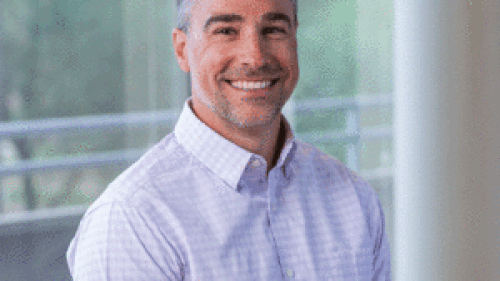“There is great confusion about what the future will be,” legendary architect Jan Gehl said at ULI Europe’s Real Estate Forum in Copenhagen in June.
We have been told that autonomous cars will solve all the problems we ever had. Or drones will be the answer. Or sensor-driven smart cities. But will any one technology future-proof cities? Gehl does not think so. City problems are much more nuanced and increasingly focused in the developing world.
Everyone at the forum already knew Jan Gehl, but that did not diminish the impact of his wide-sweeping keynote talk, which felt like a victory lap. Copies of Gehl’s 2010 book Cities for People were given to all forum attendees, and the line for autographs lasted longer than the coffee break.
“If I had 2.5 hours, we could unroll it all,” he said. But the 82-year-old architect had only an hour to share his thoughts on making livable cities for the 21st century.
Rather than relying on gimmicks and long-shot tech solutions, “maybe the future has already started,” Gehl posited. Models of cities for people that already exist or are in progress could help make cities all over the world better.
What We’re Working With
Cities of the 20th century were plagued by two planning paradigms: modernism and the car invasion, Gehl says. He graduated as an architect in 1960, just a year before Jane Jacobs published her seminal work The Death and Life of Great American Cities, which called out these two issues.
Modernist urban planners were more obsessed with freestanding buildings than the neighborhoods they were building, and cities became just an assembly of objects. Housing became “something that looks good from the freeway,” Gehl said. “Modernism was a goodbye to concern for people.”
And then there was the influx of cars. Copenhagen was a perfectly peaceful city in 1905, with big plazas and the pedestrian as king. But by the middle of the last century, the plazas were being used as parking lots—totally unimaginable in Copenhagen today.
Copenhagen was one of the first cities in the world to adapt a people-first policy in 1962, and there were actually protests when the city wanted to ban traffic from the main street. At the time, protesters said it was impossible, that “we aren’t Italian,” but every year since the Danish have become more Italian, Gehl joked.
The pedestrian-focused, bicycle-friendly culture of Copenhagen is now its biggest draw. The centuries-old dock area Nyhavn had been a parking lot for much of the 20th century; but since it became a pedestrian zone in 1980, it has been a huge tourist attraction.
What Can Be Done
Cities have traffic and parking departments and detailed statistics on how cars occupy a city. But why not a pedestrian department? Municipalities have very few statistics on how people use a city.
Copenhagen started counting pedestrians and bicycles during the 1990s to have qualitative data on how the initiatives were working. “What you count, you care for,” Gehl said.
In the mid-20th century, main streets in Copenhagen had four to five lanes for cars. The city adopted an “if you build it, they will come” mentality: Main streets now have two car lanes, plus two raised bike lanes, plus sidewalks, street-side trees, and a median to help people crossing. “You get what you invite,” Gehl says.
They made it easier to take your bike than take your car into the city. When Copenhagen started experiencing congestion in the bike lanes, it widened the bike lanes. It even made tilted trash cans designed for bicyclists and put in leaning racks at stoplights.
And it worked: Bicycles overtook cars in terms of rush-hour traffic in central Copenhagen in 2004, and 41 percent of people bicycle daily in Copenhagen as of 2017.
The city decided to take things even further. Copenhagen set a new goal in 2009 of becoming the most livable city in the world.
The Next Steps
Fifty years after modernism, people want lively, livable cities that are sustainable and healthy. “Cyberspace doesn’t make public space redundant,” Gehl says. “We cannot live from indirect communication.”
Healthy cities enable the myriad ways that humans interact with each other.
Unfortunately, some newer cities don’t. “Dubai is not sustainable,” Gehl says, following the paths of modernism and motorists.
A healthy city invites people to walk and bike as much as possible in their everyday lives, while keeping public spaces accessible for the elderly and disabled.
Gehl revisited some of his company’s greatest hits, such as the public plazas along Broadway Avenue in New York City. Times Square officially became a pedestrian oasis in 2015, drawing hundreds of thousands of visitors daily. So far, nearly 100 acres (40 ha) of space in Manhattan has been reclaimed from traffic for people.
He said that his firm’s biggest failure was in London. Gehl Architects created a big study of the public spaces in 2004, but the city has done nothing with it in 20 years, he said.
Meanwhile, Moscow’s humanizing redevelopment was a “six-year miracle,” achievable because “they have a very efficient democracy,” Gehl joked. Moscow has beautiful plazas, wide boulevards, and plentiful parks, but the city remained inaccessible for pedestrians. The Russian capital had no parking rules, so the first task was to tackle that chaos, and then to clean up sidewalks and put in more seating in public spaces. Moscow has since revitalized 200 public spaces and was a 2019 ULI Global Awards for Excellence Finalist.
“It’s good business to be sweet to people in the 21st century,” Gehl said. Humanistic city planning, putting people first, is the cheapest and simplest option. “That will make for better cities for everyone in every part of the world, and all of you can start tomorrow.”





